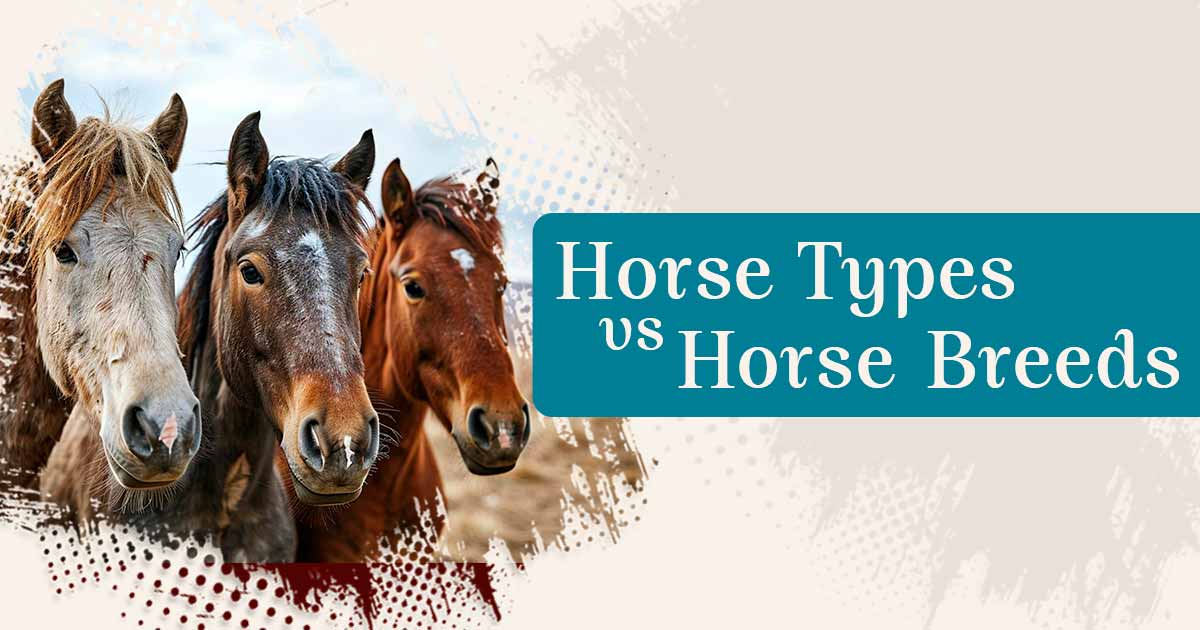The Ultimate Guide to Different Horse Types and Breeds
Horses have fascinated humans for centuries, not just for their beauty but for their versatility and unique characteristics. However, not all horses are the same. Horses can be categorized by type (based on their use and body build) or by breed (a specific lineage with distinct traits). Understanding these differences can help you appreciate their role in history and modern life or guide you in choosing the right horse for riding, showing, or photography.
What Defines a Horse Type vs. a Horse Breed?
Horse Type refers to a general category based on the horse’s purpose, build, or temperament. For instance, draft horses are known for their strength, while ponies are small and stocky.
Horse Breed, on the other hand, is determined by genetics and lineage. Breeds are recognized by specific organizations and often have a registry that tracks bloodlines, such as the American Quarter Horse Association.
Common Horse Types and Their Characteristics
-
Draft Horses
- Characteristics: Large, muscular, and built for heavy work.
- Best Known For: Pulling plows and carriages, logging, and farm labor.
- Temperament: Calm and gentle, making them great for beginners despite their size.
- Examples: Clydesdale, Shire, and Percheron.
-
Light Horses
- Characteristics: Lean, agile, and versatile.
- Best Known For: Riding, racing, and showing.
- Temperament: Energetic and responsive, often requiring experienced handlers.
- Examples: Thoroughbred, Arabian, and American Quarter Horse.
-
Ponies
- Characteristics: Small (under 14.2 hands tall), sturdy, and hardy.
- Best Known For: Children’s riding, pulling small carts, and being companions.
- Temperament: Intelligent but sometimes stubborn.
- Examples: Shetland Pony, Welsh Pony, and Connemara Pony.
-
Gaited Horses
- Characteristics: Smooth natural gaits that make them comfortable to ride.
- Best Known For: Trail riding and long-distance travel.
- Temperament: Calm and easy-going, suitable for riders of all levels.
- Examples: Tennessee Walking Horse, Paso Fino, and Icelandic Horse.
-
Warmbloods
- Characteristics: A mix of heavy draft breeds and lighter horses, known for athleticism and grace.
- Best Known For: Competitive disciplines like dressage, jumping, and eventing.
- Temperament: Even-tempered and intelligent.
- Examples: Hanoverian, Dutch Warmblood, and Trakehner.
Popular Horse Breeds Around the World
-
Arabian Horse
- Lifespan: 25–30 years.
- Characteristics: Known for their endurance, high tail carriage, and dished face.
- Uses: Competitive racing, endurance riding, and shows.
- Temperament: Intelligent, spirited, and loyal.
-
Thoroughbred
- Lifespan: 25–28 years.
- Characteristics: Slim, athletic build with long legs.
- Uses: Renowned for horse racing but also used in jumping and dressage.
- Temperament: Energetic and bold, often requiring experienced handlers.
-
Clydesdale
- Lifespan: 20–25 years.
- Characteristics: Large, strong, with distinctive feathering on their legs.
- Uses: Farm work, pulling wagons, and parades (e.g., the Budweiser Clydesdales).
- Temperament: Gentle giants with a calm demeanor.
-
American Quarter Horse
- Lifespan: 25–30 years.
- Characteristics: Compact, muscular build with powerful hindquarters.
- Uses: Versatile—used in rodeo, ranch work, and recreational riding.
- Temperament: Easy-going, reliable, and adaptable.
-
Icelandic Horse
- Lifespan: 30–40 years (one of the longest-lived breeds).
- Characteristics: Small and stocky with a unique gait called the tölt.
- Uses: Trail riding and competitions in Icelandic horse shows.
- Temperament: Friendly, hardy, and easy to handle.
-
Friesian Horse
- Lifespan: 16–20 years (shorter lifespan due to genetic predispositions).
- Characteristics: Black coat, long flowing mane, and feathered legs.
- Uses: Dressage, carriage driving, and medieval reenactments.
- Temperament: Noble, willing, and graceful.
-
Paso Fino
- Lifespan: 28–30 years.
- Characteristics: Known for their smooth, natural gait.
- Uses: Trail riding and showing.
- Temperament: Calm yet lively, ideal for beginners and experienced riders alike.
Choosing the Right Horse for You
Deciding on the perfect horse depends on your needs and goals. Are you looking for a competitive partner, a calm companion for trail rides, or a photogenic subject for a shoot? Draft horses and ponies are ideal for calm, family-friendly environments, while light horses and Thoroughbreds are better suited for high-energy activities. If you’re new to horses, consider breeds known for their gentleness, like Quarter Horses or Icelandic Horses.
Understanding the different types and breeds of horses helps you appreciate their unique qualities and histories. Whether you’re riding, working, or simply photographing these magnificent animals, knowing their traits adds depth to your experience. At Wild Heart Captures, we celebrate the beauty and personality of every horse, bringing their charm into every photo we create.

